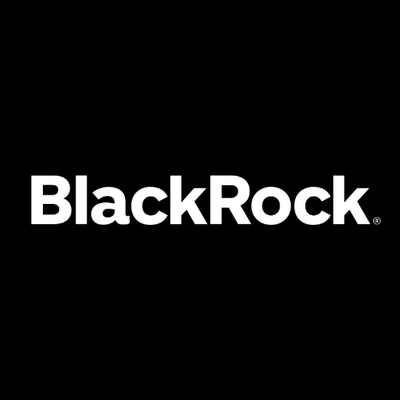BlackRock Throgmorton Trust plc (LON:THRG) has announced its portfolio update.
All information is at 30 November2022 and unaudited.
To learn more about the BlackRock Throgmorton Trust plc please follow this link: blackrock.com/uk/thrg
Performance at month end is calculated on a cum income basis
| One Month % | Three months % | One year % | Three years % | Five years % | |
| Net asset value | 10.2 | 3.2 | -31.1 | 3.0 | 24.7 |
| Share price | 7.4 | 5.3 | -35.5 | -3.1 | 40.9 |
| Benchmark* | 6.0 | -0.2 | -17.5 | 6.7 | 4.8 |
Sources: BlackRock and Datastream
*With effect from 22 March 2018 the Numis Smaller Companies plus AIM (excluding Investment Companies) Index replaced the Numis Smaller Companies excluding AIM (excluding Investment Companies) Index as the Company’s benchmark. The performance of the indices have been blended to reflect this.
At month end
| Net asset value capital only: | 615.64p |
| Net asset value incl. income: | 626.10p |
| Share price | 595.00p |
| Discount to cum income NAV | 5.0% |
| Net yield1: | 1.8% |
| Total Gross assets2: | £633.4m |
| Net market exposure as a % of net asset value3: | 103.3% |
| Ordinary shares in issue4: | 101,158,864 |
| 2021 ongoing charges (excluding performance fees)5,6: | 0.57% |
| 2021 ongoing charges ratio (including performance fees)5,6,7: | 1.38% |
1. Calculated using the 2022 interim dividend declared on 20 July 2022 and paid on 26 August 2022, together with the 2021 final dividend declared on 07 February 2022 and paid on 31 March 2022.
2. Includes current year revenue and excludes gross exposure through contracts for difference.
3. Long exposure less short exposure as a percentage of net asset value.
4. Excluding 2,051,000 shares held in treasury.
5. The Company’s ongoing charges are calculated as a percentage of average daily net assets and using the management fee and all other operating expenses, excluding performance fees, finance costs, direct transaction charges, VAT recovered, taxation and certain other non-recurring items for the year ended 30 November 2021.
6. With effect from 1 August 2017 the base management fee was reduced from 0.70% to 0.35% of gross assets per annum. The Company’s ongoing charges are calculated as a percentage of average daily net assets and using the management fee and all other operating expenses, including performance fees, but excluding finance costs, direct transaction charges, VAT recovered, taxation and certain other non-recurring items for the year ended 30 November 2021.
7. Effective 1st December 2017 the annual performance fee is calculated using performance data on an annualised rolling two year basis (previously, one year) and the maximum annual performance fee payable is effectively reduced to 0.90% of two year rolling average month end gross assets (from 1% of average annual gross assets over one year). Additionally, the Company now accrues this fee at a rate of 15% of outperformance (previously 10%). The maximum annual total management fees (comprising the base management fee of 0.35% and a potential performance fee of 0.90%) are therefore 1.25% of average month end gross assets on a two-year rolling basis (from 1.70% of average annual gross assets).
| Sector Weightings | % of Total Assets |
| Industrials | 32.1 |
| Consumer Discretionary | 21.5 |
| Financials | 13.6 |
| Technology | 6.4 |
| Health Care | 5.2 |
| Consumer Staples | 4.5 |
| Telecommunications | 2.8 |
| Energy | 1.9 |
| Basic Materials | 1.0 |
| Information Technology | 0.8 |
| Real Estate | 0.4 |
| Communication Services | 0.4 |
| Net Current Assets | 9.4 |
| —– | |
| Total | 100.0 |
| ===== | |
| Country Weightings | % of Total Assets |
| United Kingdom | 93.4 |
| United States | 3.3 |
| France | 2.1 |
| Australia | 0.6 |
| Netherlands | 0.6 |
| —– | |
| Total | 100.0 |
| ===== |
Market Exposure (Quarterly)
| 28.02.22 % | 31.05.22 % | 31.08.22 % | 30.11.22 % | |
| Long | 121.8 | 104.8 | 102.0 | 105.8 |
| Short | 2.3 | 3.3 | 4.1 | 2.5 |
| Gross exposure | 124.1 | 108.1 | 106.1 | 108.3 |
| Net exposure | 119.5 | 101.5 | 97.9 | 103.3 |
Ten Largest Investments
| Company | % of Total Gross Assets |
| Watches of Switzerland | 3.2 |
| Oxford Instruments | 3.1 |
| 4imprint Group | 3.1 |
| RS Group | 2.9 |
| CVS Group | 2.9 |
| Ergomed | 2.8 |
| Gamma Communications | 2.8 |
| Diploma | 2.7 |
| WH Smith | 2.5 |
| Auction Technology Group | 2.5 |
Commenting on the markets, Dan Whitestone, representing the Investment Manager noted:
The Company returned 10.2% during November, outperforming its benchmark, the Numis Smaller Companies plus AIM (excluding Investment Companies Index) Index which rose by 6.0%.1 Outperformance during the month was driven by the long book, while the short book detracted marginally.
Financial markets and macro data remain volatile and markets continue to be driven by inflation statistics and indications of slowing the pace of monetary tightening from central banks. Global markets continued to recover from last month’s lows and hopes of a peak in the pace of monetary tightening, particularly in the US continued to build. A CPI miss and a slightly less hawkish speech from Jerome Powell (Chair of the Federal Reserve) prompted rallies across markets. Meanwhile, corporate earnings in our view continue to come in better than feared. Indeed, many of our long positions have delivered very strong updates during the month, three of which we outline below though there have been more.
Watches of Switzerland was the largest contributor continuing its share price recovery, buoyed by a solid Q2 trading statement in early November, which revealed group revenues growing at 22% on a constant currency basis (or 30% reported) in the period, once again surpassing sell-side expectations. We continue to believe that Watches of Switzerland presents a very compelling medium term growth story as they build out their US and European network in a supply constrained industry. Tatton Asset Management, a leading provider of Managed Portfolio Solutions (MPS), delivered very strong H1 results demonstrating record levels of net inflows. MPS is the fastest growing channel within the UK IFA sector and Tatton has the largest market share, and lowest price proposition and distribution deals with the largest IFA networks setting the scene for further strong inflows from here. 4imprint delivered another 10% upgrade to forecasts, bringing the year-to-date upgrades to forecasts to 115%! 4imprint has seen an acceleration in market share gains after increased investment through COVID as well as remixing their marketing efforts to above-the-line advertising to drive brand awareness. This has driven record revenue levels while the promotional products industry remains well below its 2019 level. 4imprint still has a single digit percentage market share, leaving lots of runway for future market share gains.
RS Group (formerly Electrocomponents) fell after the company announced their highly regarded CEO was taking a second leave of absence for personal reasons with immediate effect. Of course, our sympathies are with the CEO who we regard very highly, but this development sadly overshadowed a very strong set of H1 results which beat expectations. For any cyclical growth company (regardless of the structural overlay, or track record of market share gains) the main fear is a weakening of demand, so although the company keeps beating the fade, news of a CEO departure will only heighten concerns. We think the decentralised operating model with strong autonomy to geographic heads mitigates the impact of losing a talismanic strategic CEO but we can rationalise the market’s worries. Regrettably this was a top holding for us so the share price fall has really weighed on monthly performance. Shares in Alliance Pharma fell after the company warned that demand within its b2b markets was recovering slower than anticipated. Sales have been impacted further from destocking and as a result some large Q4 orders, referenced in the interim results, will not materialise. The third largest detractor was LondonMetric which delivered a fairly solid update in the context of the wider market repricing, delivering further earnings progression from higher rental income and strong cost control leading to an attractive dividend. However capital values fell around 8% as yields pushed out.
Earlier in November, one of my colleagues spent a week at an industrials conference in the US, where the messaging was robust given strong order books and relatively stable order intake. As an aside, the buzzword from the conference was “onshoring”, lending support to our own thesis on potential for increased industrial spend as global companies seek to diversify away from China and Taiwan. Many companies also discussed fading product inflation; indeed, several management teams talked about driving overall deflation in their supplier base next year as supply chain constraints ease, commodity inflation is annualised and significantly lower shipping rates (particularly on transpacific containers).
As we know the most important data presently for all market participants remains the inflation data, and notably core inflation in the US which has heavily influenced global monetary policies and created very large moves in exchange rates and therefore earnings for many global companies, including UK small and mid-caps. It is hard for us to give an accurate prediction of this one statistic, but it does seem that any “good news” (i.e. lower statistic here) has the potential to create an easing in rate rises and an improvement in sentiment. So, feedback from companies (as outlined above) combined with what we can evidence from broader macro data supports our thesis for peaking inflation. To go further, some of the largest contributors to headline CPI (energy and food) should now be showing much lower year-on-year increases and might even turn negative year-on-year as we move into Q1 2023. The largest contributor to core CPI is housing costs and the forward-looking data we can access for rental asking prices (Zillow Observed Rent Index) suggest that the rate of increase here rolled over 3-6 months ago and so should start showing up in official current paid prices in the next few months. Anecdotally we also observe many consumer facing companies are currently cutting prices to stimulate sales, not least to clear excess inventory, so this suggests a lower level of price pressure on consumer goods as well as the potential for restocking in the coming months. We are therefore hopeful that inflation conditions can ease in the coming months.
Nevertheless, as discussed in previous updates, we have lowered the Company’s gross and net exposure to reflect the high levels of uncertainty. The gross of the Company is therefore around 105% and the net is around 102%, and we remain net long to reflect the potential that we think is inherent in many holdings given much lower valuations but, we believe, secular growth prospects.
This is the last monthly commentary for 2022, so on behalf of the whole team, we’d like to thank you for your support during this particularly challenging year and wish you all a Merry Christmas.
1Source: BlackRock and London Stock Exchange as at 30 November 2022
To learn more about the BlackRock Throgmorton Trust plc please follow this link: blackrock.com/uk/thrg





































